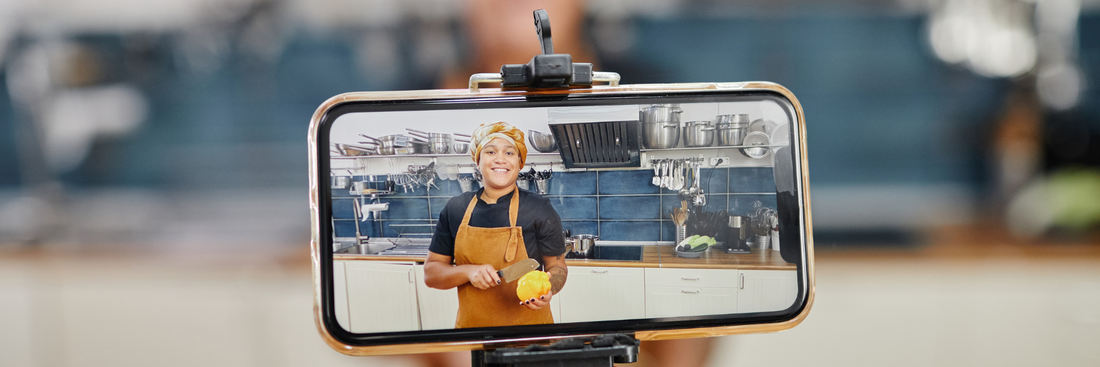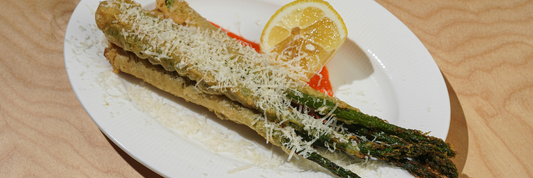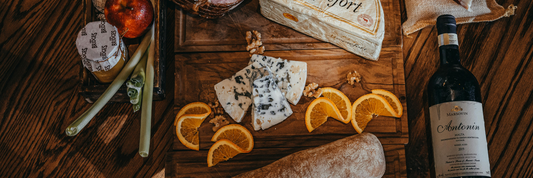Imagine this: a midweek evening, your prospective customer scrolls on Instagram or Facebook, sees your chef flipping noodles in real time, responds to a poll in the chat, asks a question, and decides then and there to place an order or drop by. That magic moment bridging digital with dining is at the heart of livestreaming in restaurants.
But is livestreaming right for your F&B brand? And if so, how do you execute it in a way that actually delights, converts, and strengthens your brand (rather than being a shaky, low-view flop)? In this article, Kimecopak walks you through why, when, how, and with what strategy to livestream plus the unique twist: how your sustainable packaging and brand story can be woven into that narrative.
-
Gamification in F&B: Stamp Collection Mini-Games to Boost Customer Loyalty
-
Food Photography Optimization: Why Natural Lighting Makes Dishes Look Better
Why Restaurants are Turning to Livestreams

The Value & Benefits of Livestreaming in F&B
- Authentic Storytelling & Transparency
Customers love seeing behind the scenes the kitchen hustle, the plating, even how a sauce is made. Live gives trust. - Real-time Engagement & Feedback Loop
Chat, polls, live Q&A instantly connect you with viewers. You can gauge interest, ask for preferences, adapt. - Extending Reach & Brand Visibility
Livestreams often get prioritized in social algorithms, drawing new viewers beyond your regular followers. - Hybrid Monetization & Conversion
You can run limited-time offers, exam deals during stream, or drive reservations. - Content Repurposing & Evergreen Assets
After going live, you can clip highlights, post reels, share behind-scenes snippets extending the ROI.
Risks & Challenges to Consider
- Technical issues: poor audio, dropped connection, bad lighting, delays.
- Awkward pacing or silence: live is unforgiving.
- Overexposure of brand flaws: unclean space, staff mistakes, slow service may be visible.
- Viewer drop-off: if viewers aren’t engaged, they’ll click away.
- Cost vs. ROI: investing in gear and staff time must justify benefits.
When (and When Not) to Livestream

Situations That Justify Going Live
- Launching a new menu or signature dish
- Special event (anniversary, guest chef, wine pairing)
- Holiday season, festival events
- Behind-the-scenes features (kitchen, procurement)
- Interactive formats (Q&A, cooking classes, tasting)
These moments have built-in interest and urgency.
Cases Where Livestream May Do More Harm Than Good
- Business is understaffed or disorganized live might expose flaws
- You have no story or content to offer blank camera is boring
- No time to plan or promote a spontaneous stream may not attract audience
- Repetitive content: doing the same thing over and over with no novelty
If your first few attempts don’t land, it’s okay treat them as experiments to learn.
Key Elements of an Engaging Restaurant Livestream
Content Types That Perform Well
| Type | Description | Why It Works |
|---|---|---|
| Kitchen / food prep | Show cooking steps, plating, chef commentary | Visual, tantalizing, educational |
| Menu / new dish reveal | Introduce, taste, explain ingredients | Builds anticipation |
| Staff Q&A / storytelling | Chef or founder shares stories, answers live questions | Builds emotional connection |
| Tasting / pairing sessions | Wine-beer-food combinations live | Interactive and immersive |
| Events / performances | Live music, open mic, seasonal celebration | Shared social experiences |
| Contests / polls / games | Trivia, live giveaways, reward prompts | Drives real-time participation |
These formats are cited in livestream guides for restaurants.
Interactivity, Storytelling & Pacing
- Begin with a hook: a curiosity, “You won’t believe what happens behind this door.”
- Alternate segments: cooking demo → Q&A → poll → guest → wrap-up
- Invite viewers to comment, vote, ask questions
- Use on-screen cues: “Comment YES to see recipe step 3”
- Keep a conversational, human tone don’t treat it like a scripted lecture
Production Quality: Audio, Video, Lighting, Connectivity
- Use a decent microphone internal phone mics often falter
- Use stable camera support (tripod, gimbal)
- Ensure lighting: front-facing light, avoid backlight shadows
- Use reliable internet (WiFi preferred over cellular)
- Test transitions, overlays, resolution settings ahead of time
Platform, Format & Scheduling Strategy

Choosing the Right Platform
- Facebook Live: broad reach, embedded in social feed
- Instagram Live: visually oriented, mobile-first, immediacy
- YouTube Live: supports longer sessions, searchable afterward
- TikTok: trending, youthful, offers live gifting features
- Twitch: niche but interactive, especially for hybrid food/gaming audiences
- Multi-platform streaming: stream to multiple platforms simultaneously (tools like Restream)
In livestreaming guides, selecting platform based on your audience and content type is a priority.
Format: Host, Guest, Multi-Camera
- A single host (chef or presenter) is simplest
- Invite guests (co-chef, sommelier, influencer) to add variety
- Multi-camera views (kitchen, plating, host) make it dynamic
- On-screen overlays: polls, countdown timers, comments, recipe steps
Best Timing, Length & Frequency
- Length: 20–45 minutes is a sweet spot long enough to cover content but short enough to retain attention
- Frequency: 1 livestream per week or 2 per month to start maintain consistency
- Time: evenings or just before dinner peak (e.g. 5pm–7pm) to influence dinner decisions
Pre-live, During-live & Post-live Checklist

Pre-live: Planning & Promotion
- Announce in advance: posts, stories, countdown stickers
- Create teaser content (e.g. “We’re unveiling our secret sauce live”)
- Prepare an outline/script with flexibility points
- Do a full test run (audio, camera, connection)
- Set up engagement triggers: comments, polls, giveaways
During Live: Engagement & Flow
- Greet early viewers, welcome new joiners
- Ask open questions: “Where are you watching from?”
- Read & respond to comments / questions
- Use calls-to-action (CTA): reserve, order, visit website
- Mid-stream boosts: surprise coupon, flash giveaway
- Smooth transitions between segments
Post-live: Repurpose & Analyze
- Save the video and post snippets / highlights / clips
- Share recap posts with key moments
- Send follow-up messages or email to participants
- Analyze metrics: peak viewers, average view time, engagement, conversions
- Gather feedback (poll or comment) to improve next time
Conclusion
Yes, livestreaming in restaurants is worth trying but only with intention, planning, and content that resonates. A shaky, unengaging livestream could even harm brand perception. But a well-crafted one can:
- Deepen emotional connection with your audience
- Attract new followers and diners
- Amplify brand storytelling
- Provide repurposable content
Start with one pilot livestream focused on something meaningful (a new dish, chef story, or sustainability reveal). Learn, iterate, and gradually scale. And whenever you do let your packaging, your green story, and your brand values be part of the narrative frame, not just the backdrop.
If you like, I can help you draft a livestream script & schedule optimized for a Kimecopak-partnered café or F&B brand. Want me to build that for you?
FAQ
1. How long should a restaurant livestream last?
A good duration is around 20–45 minutes long enough to provide value, short enough to retain attention.
2. What content is “safe” to livestream (without revealing trade secrets or violating privacy)?
Stick to non-confidential processes (general cooking steps, plating, storytelling), avoid showing private recipes or internal operations. Secure consents for showing staff/customers.
3. Do livestreams need professional equipment from day one?
Not necessarily. You can start with a decent smartphone, external mic, and good lighting. As you scale, invest in cameras, multicam setup, and mixers.
4. How often should a restaurant livestream?
Begin with once per week or two times per month. Consistency is more important than frequency.
5. How to measure success of a restaurant livestream?
Key metrics: peak concurrent viewers, average watch time, number of comments/reactions, number of new followers, click-throughs or reservations generated, and content repurposing performance.
-
LEARN MORE about How "Subscribe for a Happy Life" will benefits your business HERE!
-
LEARN MORE about Kim Vu, sharing on the challenges she faced as a former restaurant owner, and how she overcame them to create KimEcopak HERE!




